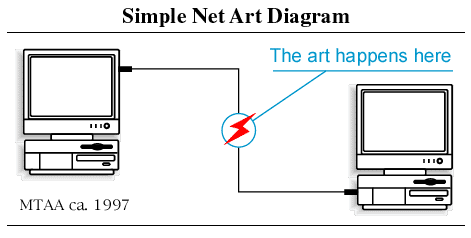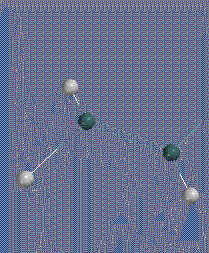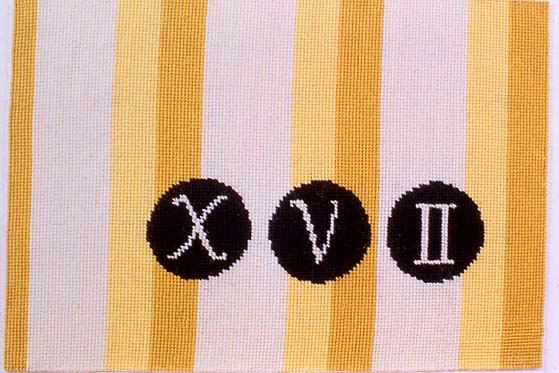View current page
...more recent posts

There has been a little controversy in bloggerville over the American mercenaries killed by the mob in Fallujah. Kos, who posts on the liberal website Daily Kos, made a supposedly ill-advised remark in some other blogger's comment section about the deaths, leading right wing law professor Glenn Reynolds (aka Instapundit) to recommend boycotting or censuring Kos's sponsors, many of whom were Democratic candidates. A few advertisers pulled out (don't know if any--or how many--were candidates), but Kos says he's replaced them. Predictably, the unctuous Kerry campaign publically de-linked Kos from its website.
Here's what Kos said about what he said:
There's been much ado about my indifference to the Mercenary deaths in Fallujah a couple days ago. I wrote in some diary comments somewhere that "I felt nothing" and "screw them."Those deaths were terrible but I hate that saying "screw the mercenaries" is being framed as an issue of patriotism or "supporting the troops." These high-paid soldiers of fortune are essentially a private army dedicated to securing Middle East oil assets and protecting corporate interests abroad. And just a reminder: they're shooting Iraqis today; tomorrow they could be over here in the States breaking strikes and busting protesters' heads. This isn't as farfetched as it sounds: the Bush campaign recently hired Vance International, notorious anti-labor thugs, for "private security." This privatization of military functions is a sick trend, and I actually think it's more patriotic to oppose it. Unfortunately the Kerry campaign seems to think we should "support the mercs."My language was harsh, and, in reality, not true. Fact is, I did feel something. That's why I was so angry.
I was angry that five soldiers -- the real heroes in my mind -- were killed the same day and got far lower billing in the newscasts. I was angry that 51 American soldiers paid the ultimate price for Bush's folly in Iraq in March alone. I was angry that these mercenaries make more in a day than our brave men and women in uniform make in an entire month. I was angry that the US is funding private armies, paying them $30,000 per soldier, per month, while the Bush administration tries to cut our soldiers' hazard pay. I was angry that these mercenaries would leave their wives and children behind to enter a war zone on their own violition.
So I struck back.
[...]
[In] Iraq, our men and women in uniform are there under orders, trying to make the best of an impossible situation. The war is not their fault, and I will always defend their honor and bravery to the end of my days. But the mercenary is a whole different deal. They willingly enter a war zone, and do so because of the paycheck. They're not there for humanitarian reasons (I doubt they'd donate half their paycheck to the Red Cross or whatever). They're there because the money is DAMN good. They answer to no one except their CEO. They are dangerous, hence international efforts (however fruitless they may be) to ban their use.
So not only was I wrong to say I felt nothing over their deaths, I was lying. I felt way too much. Nobody deserves to die. But in the greater scheme of things, there are a lot of greater tragedies going on in Iraq (51 last month, plus countless civilians and Iraqi police). That those tragedies are essentially ignored these days is, ultimately, the greatest tragedy of all.
We're continuing to discuss that dumb New York Times article about Net Art here. There has been a sea change that the writer completely missed--an influx of artists redefining the medium, not so much through browser-dismantling code a la Jodi.org, but testing the limits of how much a window can hold, like turning an amplifier up to 11. These largely basement producers handle Net graphics in a painterly or expressionistic way, cocking a half-appreciative, half-horrified eye on all the weird content out there on the Internet. The phenomenon isn't about marketing (yet) but rather thrives within the Net's potlatch or "gift economy" of upload exchange. Artists put up simple animations made with .GIFs or Flash, with sound or without, as well as appropriate, resize and mutate found .GIFs and jpegs, attacking visual phenomena the way a junglist attacks sound (to make an electronic music analogy). Rebellious defacement and smartass humor trump the tedious academic-cum-Sol LeWittoid pallette of earlier net practice. In the Times thread Sally sums up the first generation of self-defined Net Art as "long-loading, find-the-place-to-click-me narratives packed with theoretically correct reference to the body or lack thereof." There are just too many sites resembling university sociology projects, rarely repaying the time you invest in them, illustrated with diagrams like this one from 1997:
 .
.
It's not that MTAA is humorless, but their art is very much about pointing and clicking and following steps, rather than just having raw sensation flooding into your browser. For an example of the latter, check out this remix of the above diagram by Abe Linkoln, one of the bloggers at 544x378(WebTV). Talk about the Oedipal slaying of a forerunner. Here's another piece from the WebTV site (I think also by Linkoln). This was done by searching "544 X 378" in Google Images, picking a blurry, faintly appalling image out of a page full of possibilities (in this case a random dork in a mask sitting at his computer), then adding a kind of Sigmar Polke screen of "plus" signs as a shifting psychedelic overlay. This use of dimensions to search for images has the randomness of a drive-by shooting. Or check out this .GIF by jimpunk, an image both sublime and gritty, resembling a sleek physics demo that appears to be destroying its own background:

With more of this happening, the Whitney might think about setting up those terminals again!
UPDATE: My own reconfiguration of the "MTAA simple" and "Linkoln complex" net art diagrams is here.
UPDATE, 2012: The GIF I thought was posted by Linkoln was, in fact, posted by Linkoln (then called Abe W. Linkoln), on March 15, 2004 (permalink to the post doesn't work).
A couple of short clips from Laura Parnes' video installation Hollywood Inferno are now available on her website. As I mentioned in an earlier post, some of the dialogue is appropriated, Kathy Acker-style, from media and art-critical sources. In this clip (which should load in your browser as a Quicktime movie), the source of the words is Dave Hickey, a critic embraced as a spiritual mentor by many of my peers for his supposedly frank, "jazzy" style. Some see him as a noble outsider, I think, when he is in fact a creature of the institutional art world, and quite the cynic. As a non-fan from way back, I get a special kick hearing his words spoken by Guy Richards Smit's sleazebag Virgil, who, in Parnes' video, is a Satan figure leading a young girl inexorably to damnation. As Lisa Gangitano puts it, somewhat less ecclesiastically, in her "Repulsion" exhibition catalog essay:
Sandy occupies hermetic spaces that Virgil is quite eager to fracture, providing viewpoints previously unavailable to [her]. As he leads her through this defamiliarized territory populated by demonic Furbies, Columbine models, and fire-breathing teenagers, she becomes more and more seduced by the pleasure of spectatorship. The scale of her world shifts, and so does her definition of beauty.Hickey, however, reverses the process, leading the reader back to comfortably familiar notions of beauty from the wilderness staked out by "French critics."
This page from the English department of a Japanese university strings together excerpts from science fiction novels and stories into a continuous single text. It reminds me of THE NAM, a phone-book thick transcription of dialogue from five Hollywood Vietnam movies by YBA (young British artist) Fiona Banner. The only two chunks of text I recognize are Heinlein's Stranger in a Strange Land and Cordwainer Smith's "A Planet Called Shayol" (any other attributions?). I wrote about the Smith story a while back and have cleaned up the excerpt from the Japanese page and posted it in the comments to that post. That is one f*ed up story.
The NY Times ran another in its endless series of chin-scratchers on "Internet Art" yesterday. The writer talked to a few of the players but couldn't reach any conclusions, so he opted for the annoying "on the one hand/on the other hand" format, while still trying to make it sound like some Rubicon had been crossed. Or retreated from. Or something. He mentions one noteworthy fact as evidence of the "death of Net Art"--that the Whitney included no internet section in the Biennial this year--but then doesn't talk to the current Biennial curators to ask why that decision was made. (Maybe it's just because the terminals never worked.) Instead, he tracks down the curator of the 2002 Biennial and gets some exquisite hot air on the subject.
Below is an annotated version of the article.
March 31, 2004
DIGITAL
Internet Art Survives, but the Boom Is Over
By BEN SISARIO
IT'S dead. It's thriving. It's everywhere and nowhere.
Like most things in the online world, the state of Internet art is subject to no small amount of exaggeration. During boom times, as art made with ones and zeroes entered Chelsea galleries [Postmasters] and blue-chip museums, the new form was seen as the wave of the future [by reporters and publicists]. But now, ask an artist or a gallery owner or a blogger about it and you are likely to get a groan [; ask an artist about it and you're likely to hear that no one calls it Net Art anymore; ask a blogger about it and he will mention a hundred wack things he's found lacking any institutional imprimatur.]

Bill Davenport, XVII, 1994, wool needlepoint (stitched by Olga Vannucci). My earlier discussion of Davenport is here, and more needlepoints from the series are here (click on thumbnails for enlarged views).
cuechamp recently posted a music mix titled "source code" [(76 min - 72MB - .mp3], consisting of the original songs--mostly from the '70s--that were subsequently, heavily mined for sampled drum breaks by hiphop and drum & bass producers. If you've listened to any music other than country (and maybe even that) for the last 25 years you will also recognize many of the piano stabs, vocal hooks, and random cowbells in these R&B, funk, and fusion classics (they were also very popular with house and garage producers). cuechamp doesn't layer or mash up the tunes: one song respectfully follows another in a nice flow that would also make it an excellent house party soundtrack. Here's the tracklist:
1. chase the devil - max romeo and the upsetters
2. amen, brother - the winstons
3. think about it - lyn collins
4. apache - incredible bongo band
5. ready or not - the delfonics
6. take me to the mardi gras - bob james
7. i'm gonna love you just a little more - barry white
8. shack up - banbarra
9. you can't hide from yourself - teddy pendergrass
10. scorpio - dennis coffey
11. fate - chaka khan
12. dance to the drummer's beat - herman kelly (I love this one -tm)
13. all this love that i'm giving - gwen mccrae
14. get out of my life woman - lee dorsey
15. far beyond - locksmith
16. ashley's roachclip - soulsearchers
17. i love you more - george duke
18. champ - the mohawks
19. praise you - camille yarbrough
20. funky drummer - james brown
It would be interesting to create graphs showing all the subsequent uses of sound bites from this "source code." If you sorted them by length you'd probably find the samples get longer in proportion to (1) the age of the track using the sample and/or (2) the economic strength of the samplee. This is because of an "invisible attractor" force in current creative endeavors called The Law. Early house and hiphop was made in the day before humorless poor sports like The Turtles started suing and winning cases for their precious string snippets. Nowadays the samplee becomes an involuntary creative partner in the new production, depending on the amount of lawyer fees he/she can afford (or recoup on contingency). Such issues are discussed in Lawrence Lessig's new freeware book, also linked to on cuechamp's page.
Here's a relevant quote pulled not from Lessig's .PDF but from a NY Times article about the Danger Mouse Grey Tuesday protest, before the article disappeared into the Times' proprietary vault:
Jonathan Zittrain, a director of the Berkman Center for Internet and Society at Harvard Law School, said the issue is indeed a gray one. "As a matter of pure legal doctrine, the...protest is breaking the law, end of story," Mr. Zittrain said. "But copyright law was written with a particular form of industry in mind. The flourishing of information technology gives amateurs and home-recording artists powerful tools to build and share interesting, transformative, and socially valuable art drawn from pieces of popular culture. There's no place to plug such an important cultural sea change into the current legal regime." (emphasis added)
